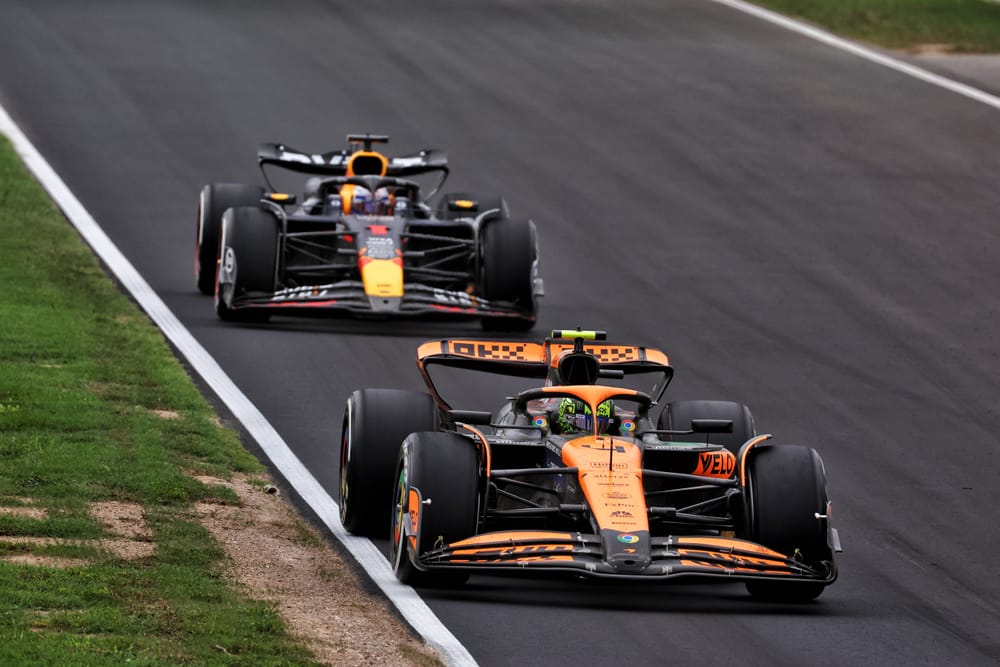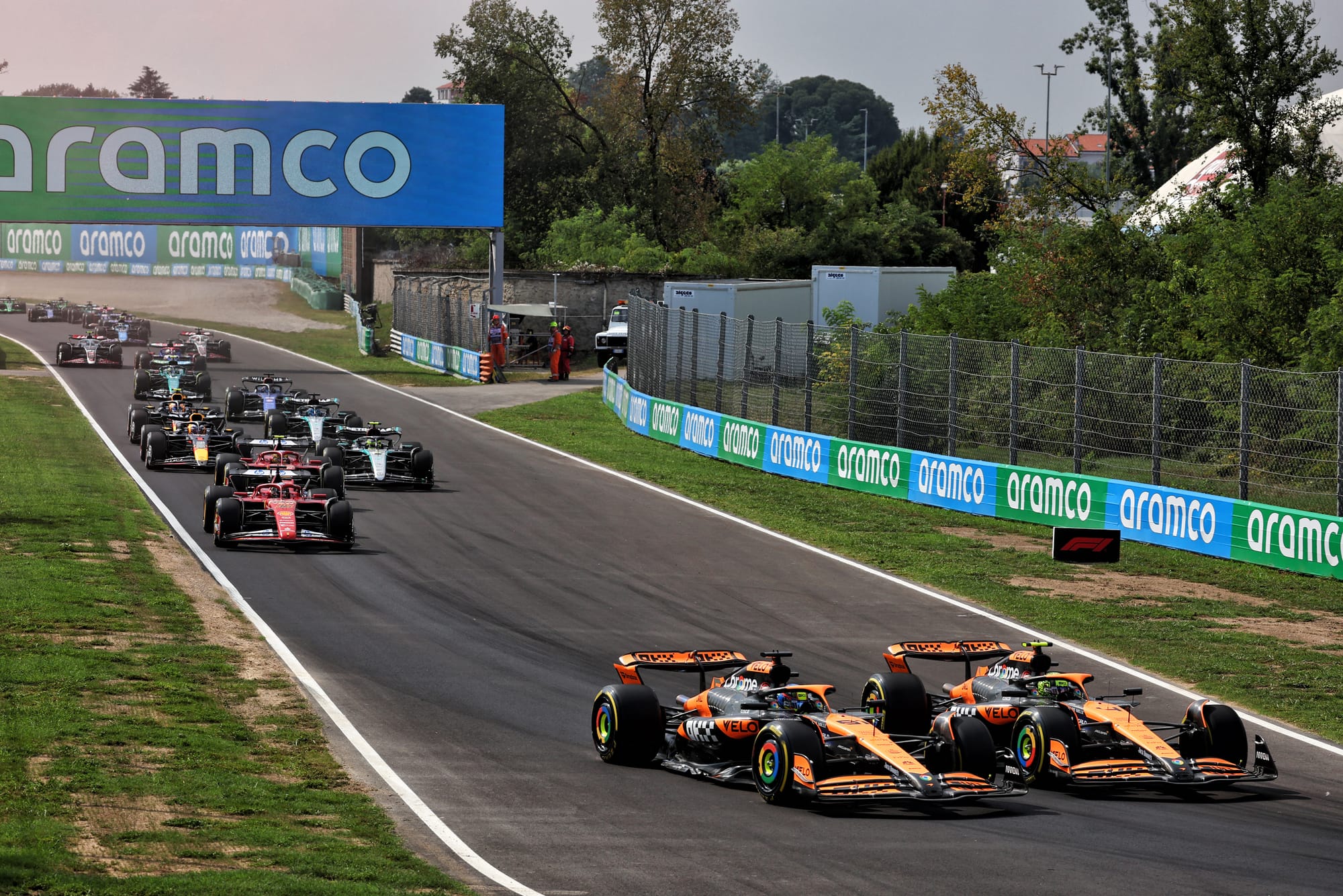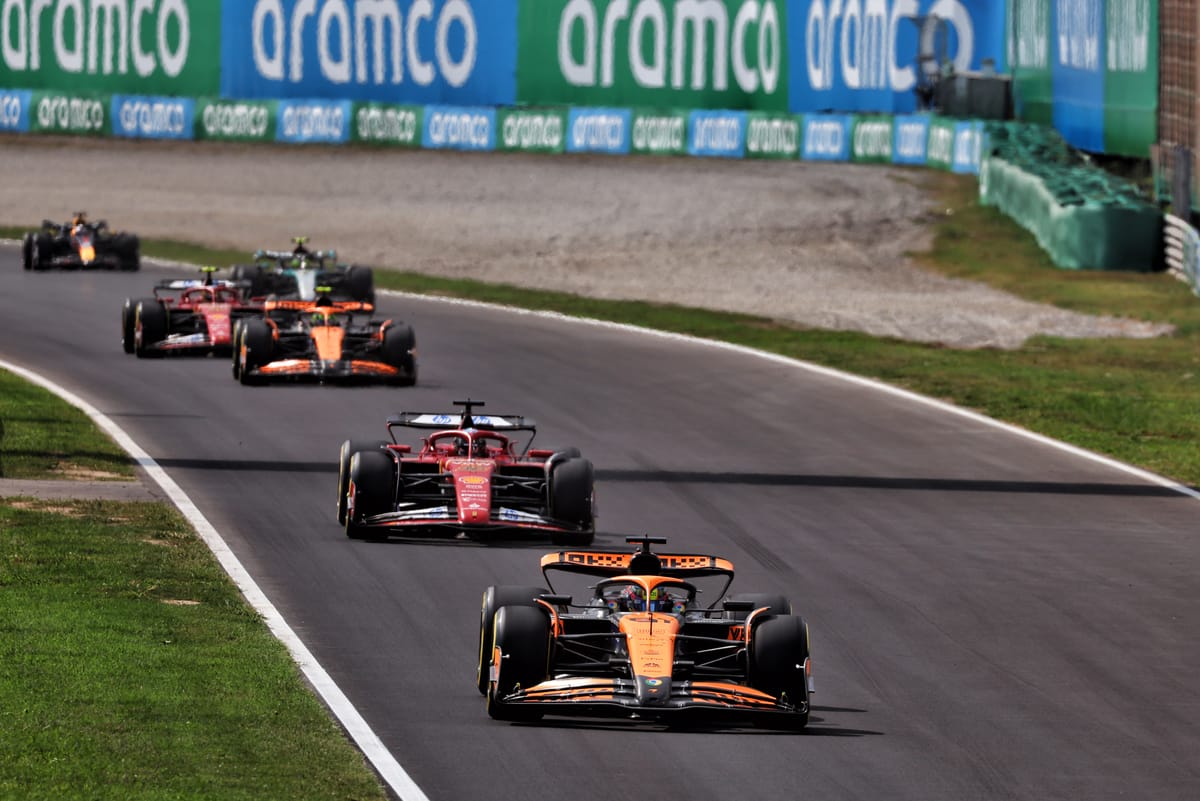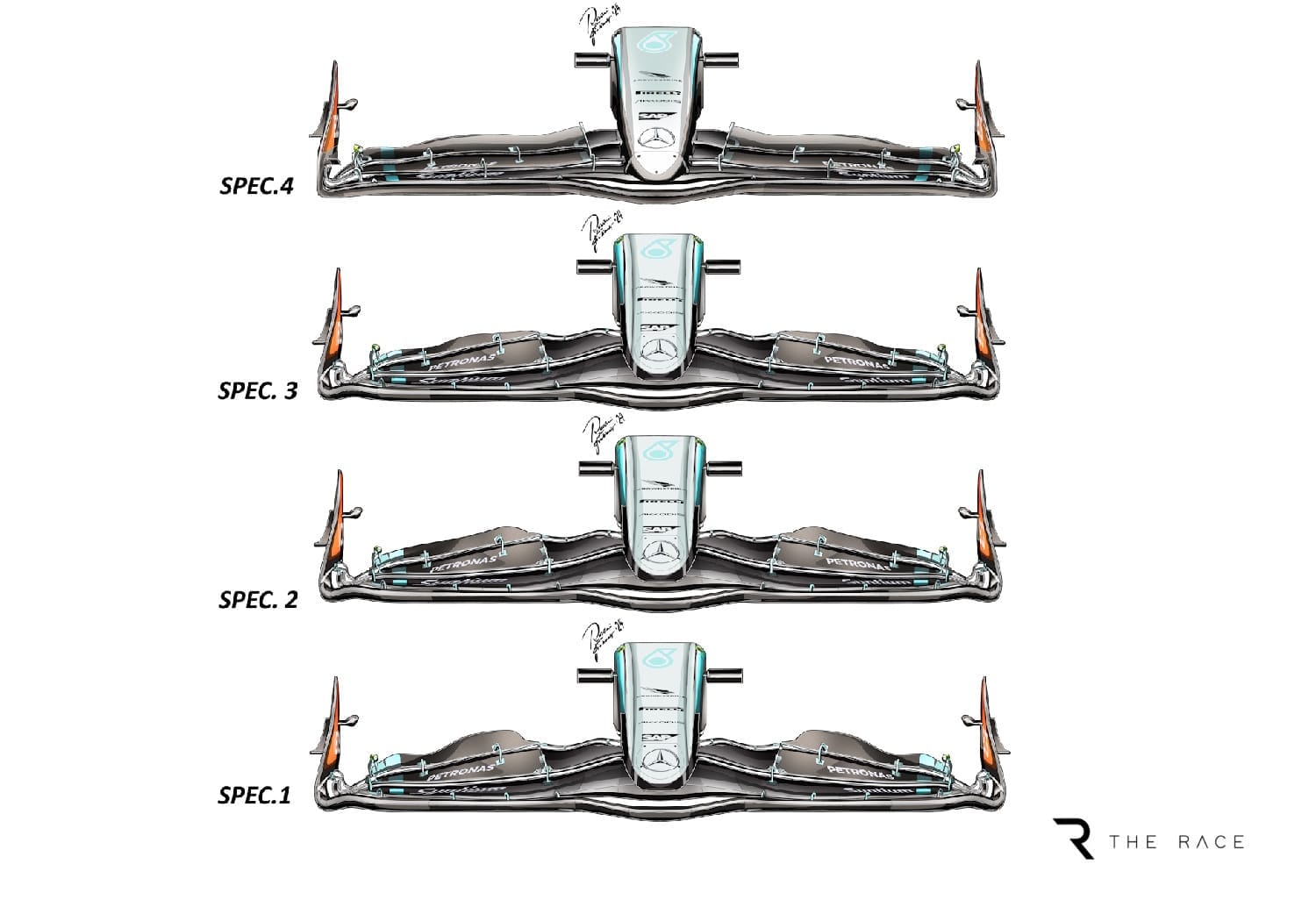Up Next

Red Bull and Ferrari want clarification from the FIA over the flexibility of the front wing used by Formula 1 pacesetter McLaren - but it has passed all legality tests so far and the governing body is not planning any “short-term” action.
In the space of 18 months, McLaren has improved from struggling to score points to being a regular victory contender and - as Red Bull has encountered increasing problems - a surprise challenger in both 2024 championships.
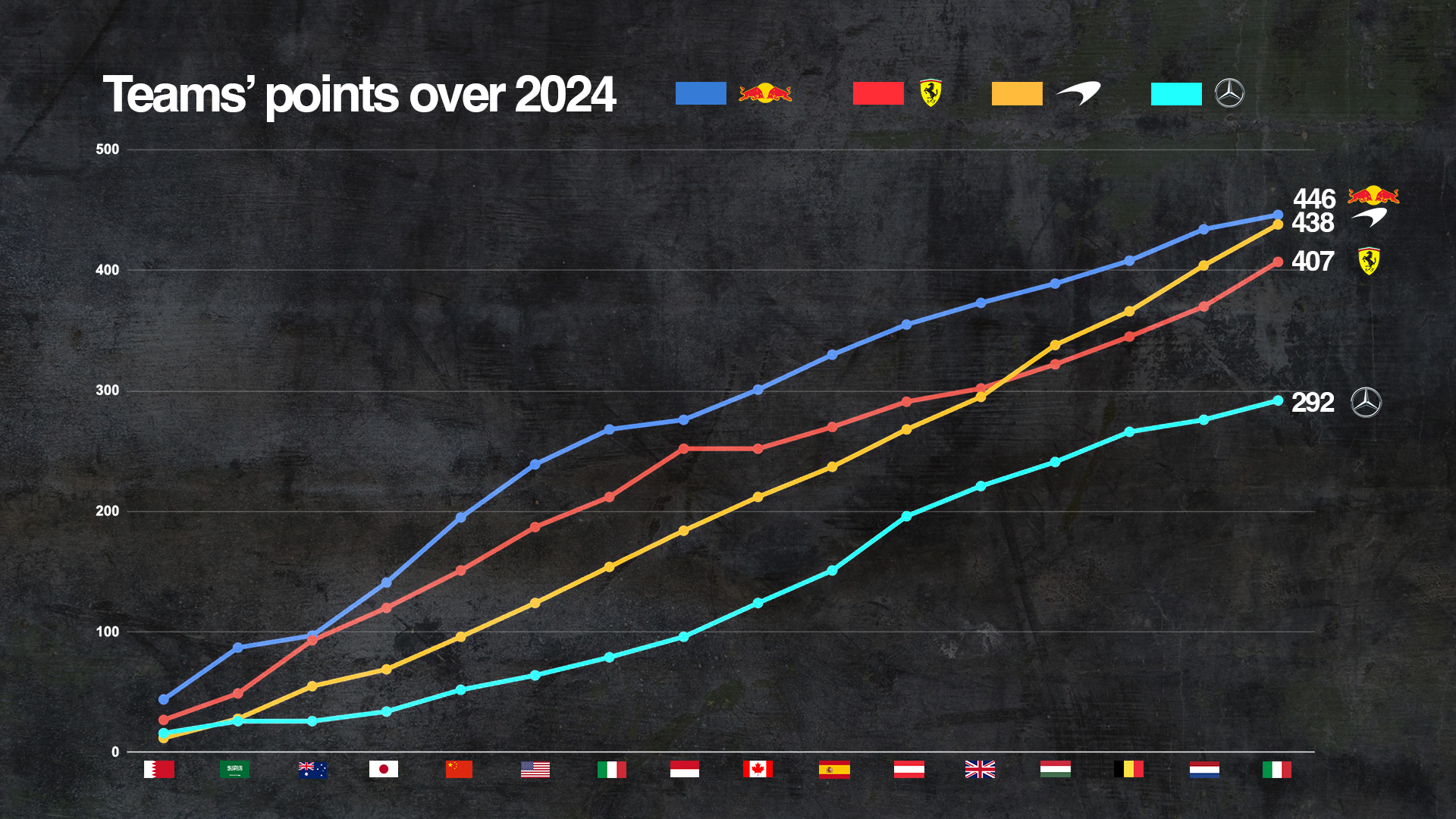
While Red Bull admits to being confused technically, McLaren has not put a foot wrong in development since it started to move towards the front last year initially with an Azerbaijan Grand Prix upgrade in late April that laid the foundations for the major step forward in Austria in early July.
McLaren's prolific development has been unmatched since then and this year it seemed to trade off a little of its high-speed supremacy to improve performance in the slower turns, which has transformed it into an all-rounder that’s a threat at every track - and has outscored Red Bull in nine of the last 10 races to cut its lead to just eight points.
With that has come increased scrutiny from rivals, particularly as video footage of the McLaren front wing shows how much it flexes under load on the straights before returning to its primary position under braking. The behaviour of the Mercedes front wing has also been noted.
Making the most of the flexibility that must be allowed in aerodynamic parts (given they cannot be entirely rigid) is vital to making the cars work. All wings deform under load to some extent - the challenge is having the control do this predictably, reliably and safely while passing the load tests.
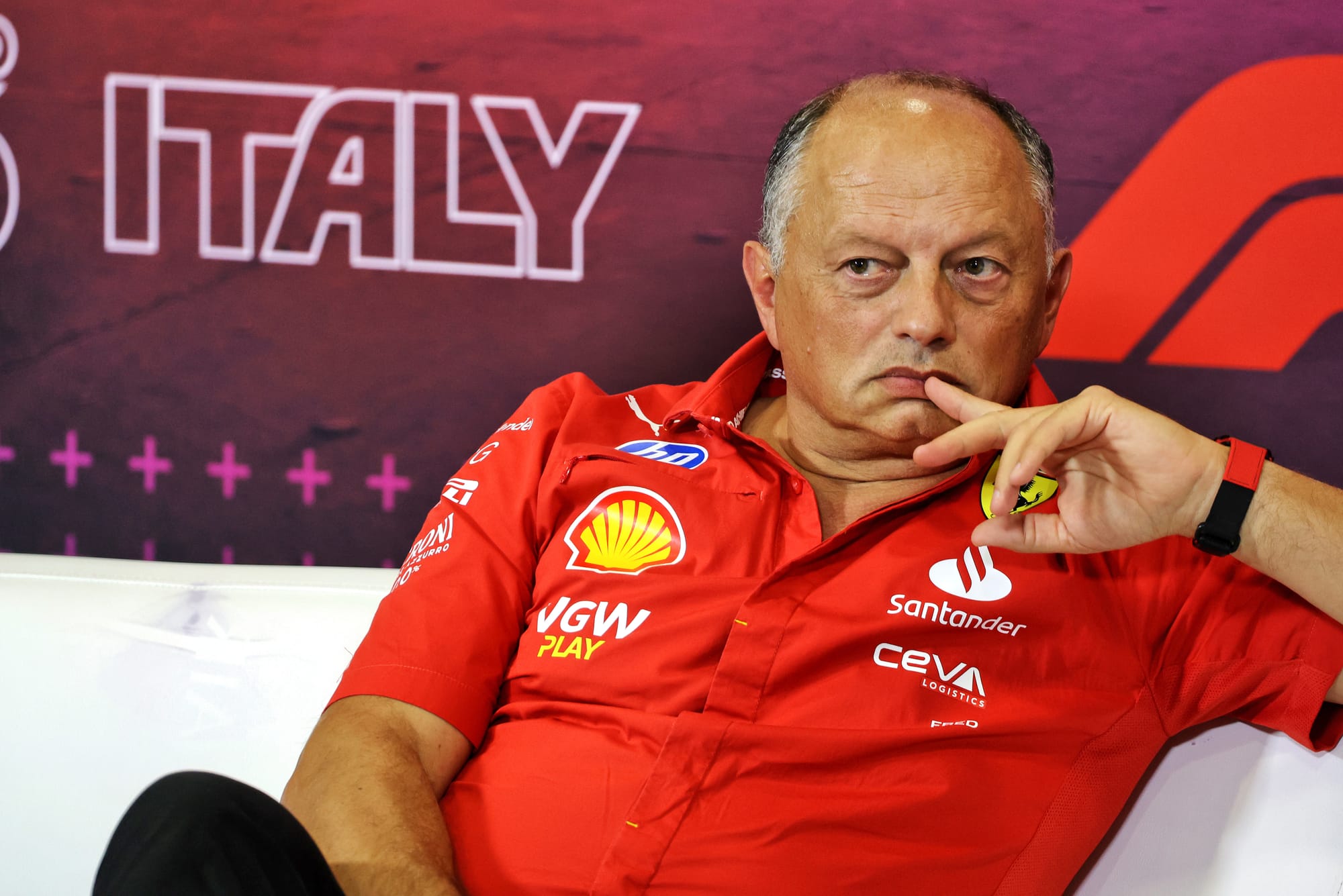
“This is a discussion I don’t want to have with you,” said Ferrari team principal Fred Vasseur when asked after the Italian Grand Prix if the McLaren front wing was legal.
“I will have it with [FIA single-seater director Nikolas] Tombazis.
“We have to respect the decision of the FIA. But we will have the discussion again.”
Pushed on it again later in the same media session, Vasseur said: “We have to deal with it internally with the FIA.”
Red Bull team principal Christian Horner did not directly state he was seeking clarity, although it is understood Red Bull is aligned with Ferrari on this matter. After Red Bull was beaten by McLaren at Zandvoort, though, he did admit: “The way that the front wings are being used are quite different. If you look at the front wing angle of McLaren and Mercedes, they’re very, very different to the rest of the grid.”
At Monza, Horner also referred to an in-season adjustment to the load tests in early 2021 when flexing bodywork was a topic then.
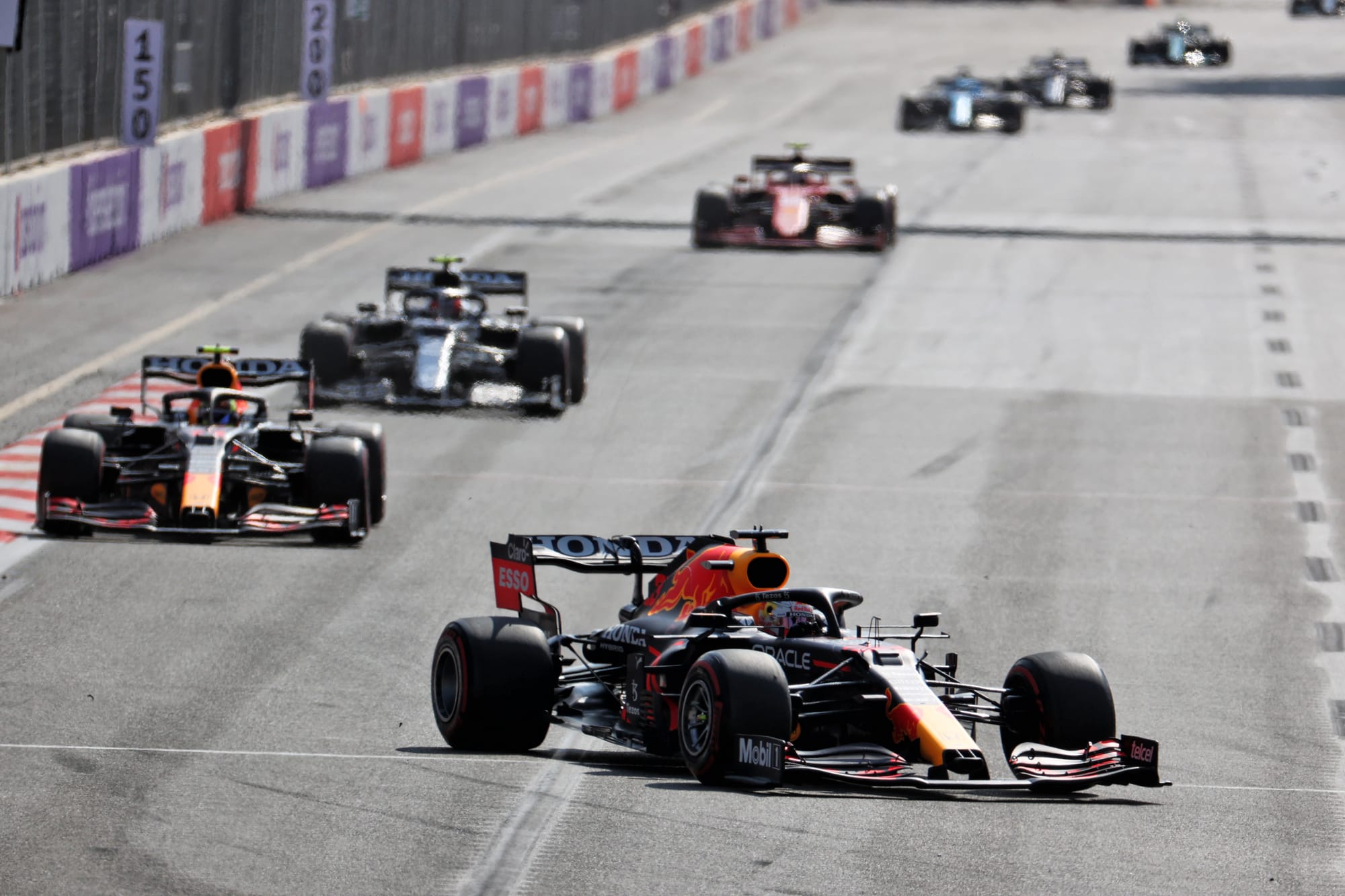
“The regs are very clear,” said Horner.
“That’s an FIA issue, so obviously there’s a test you pass and then you have to look at the wording of the regulations.
“If you remember back in 2021 certainly around Baku time there was a change to the front wing regulation. Even though our wing passed the test, it was exploiting an elasticity.
“So, that’s an FIA issue, we’ll leave it with them.”
INTERVENTION OR PROTEST?
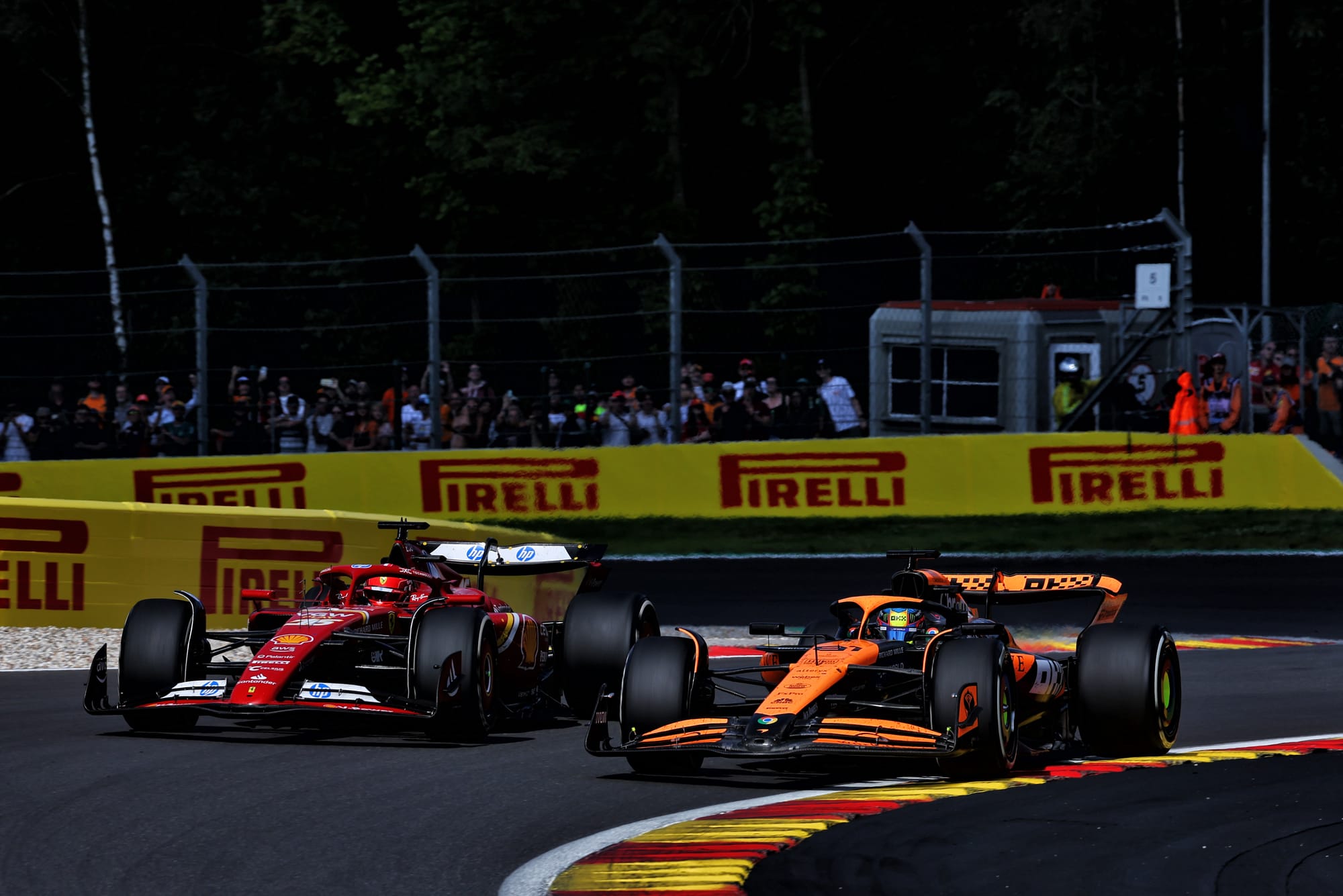
The FIA is actively studying the amount of flexibility from front wings and there’s the possibility of changes for next year based on what it’s learned.
Starting at the Belgian Grand Prix before the summer break, the FIA began to measure front wing deformation on track more closely, using its own additional cameras housed on the nose looking sideways - as the usual forward-facing cameras used for broadcasts do not capture the complete front wing.
The FIA said in July, when this emerged, that the data would be used to enhance its understanding of bodywork flexibility for future regulations - rather than changing anything this season.
At the time, it also stressed all front wings checked so far had passed the existing tests and were deemed legal.
It reiterated that position in a statement issued on Tuesday in response to news of Red Bull and Ferrari's concerns.
"All front wings are currently compliant with the 2024 regulations," said the FIA statement.
"Since the Belgian Grand Prix, the FIA has acquired additional data during FP1 and FP2 sessions to assess dynamic behaviours through an FIA-mandated video camera which captures areas of the front wing which are not visible through the official FOM cameras.
"This exercise will continue at least up until Singapore to ensure every team will have been running the mandated FIA camera on different types of tracks (low, medium, high and very high downforce).
"This will ensure a large database allowing the FIA to draw the most objective picture of the situation and quantify differences between the various dynamic patterns observed on track.
"The FIA has the right to introduce new tests if irregularities are suspected.
"There are no plans for any short-term measures, but we are evaluating the situation with the medium and long-term in mind."
This situation is all part of the ongoing battle the FIA is fighting to keep this under control. Realistically, success in governing aerodynamic component flexibility can only ever really be about containing it to tolerable levels.
The FIA technical department ultimately has its understanding of where the line is on aeroelasticity, one that should be shared by teams. But the current situation suggests otherwise.
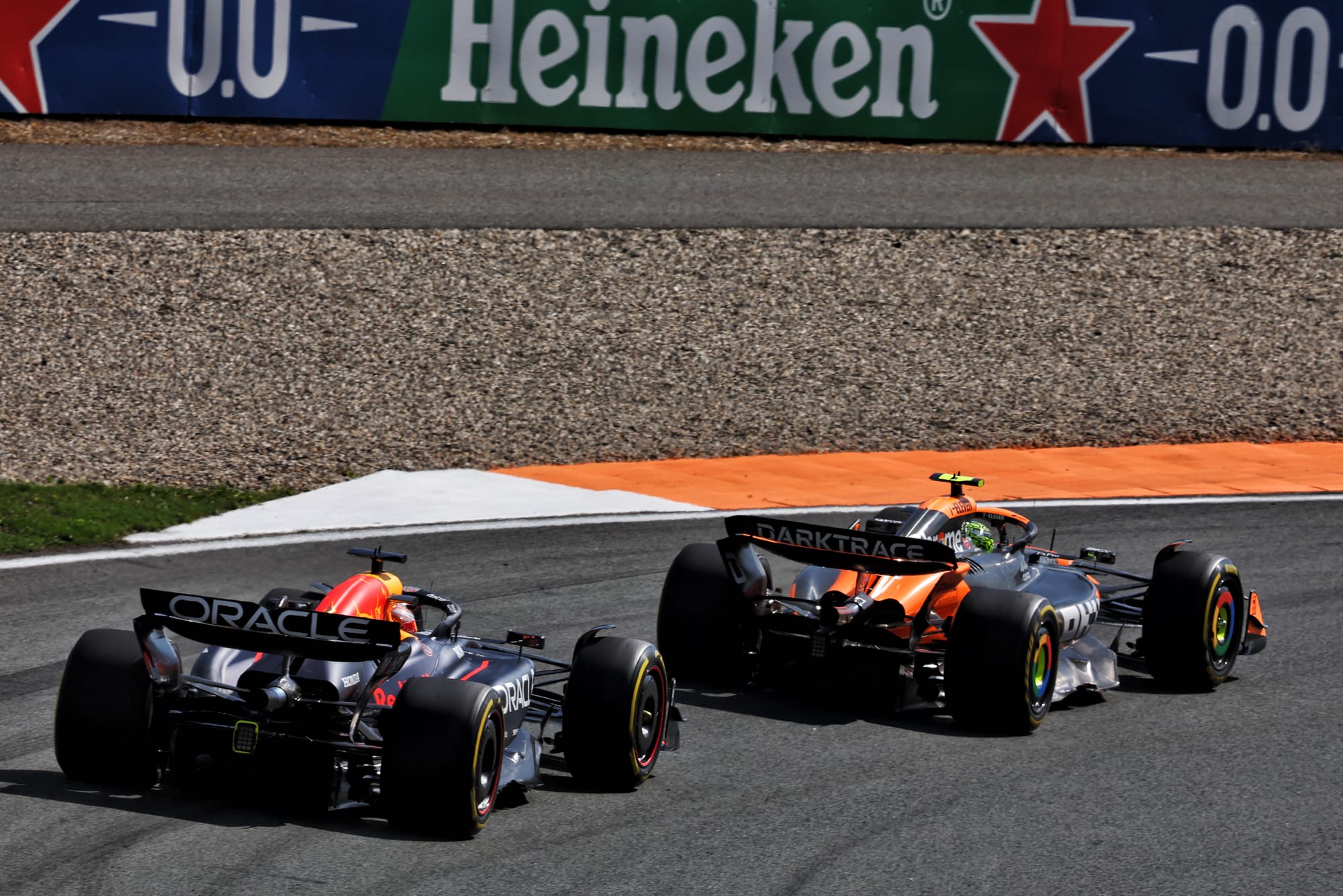
Ferrari and Red Bull’s concerns about what McLaren and Mercedes are doing means either it goes beyond their understanding of what’s acceptable, which might well be rooted in their own historic experiences going back many years, or they simply can’t replicate it.
Either way, they are lobbying for action from the governing body. But if there is to be no intervention this season and a rival is convinced that there is an illegal amount of flexing going on, they could simply lodge a protest.
Though the stewards are appointed by the FIA, they are independent of it to the point where there are cases in the past where there has been fundamental disagreement between the two. The stewards could measure the flexibility of a component against the wording of the regulations and the documented history and make a ruling.
It would be complicated, but if a team has the conviction of its beliefs that someone else is going too far then that’s the arena for it to be tested.
Every team has the right to protest, just as every team has the right to argue that their component design is perfectly legal according to their understanding of the rules and the way they are policed.
McLaren team principal Andrea Stella was not asked about this at Monza but he has addressed the matter before.
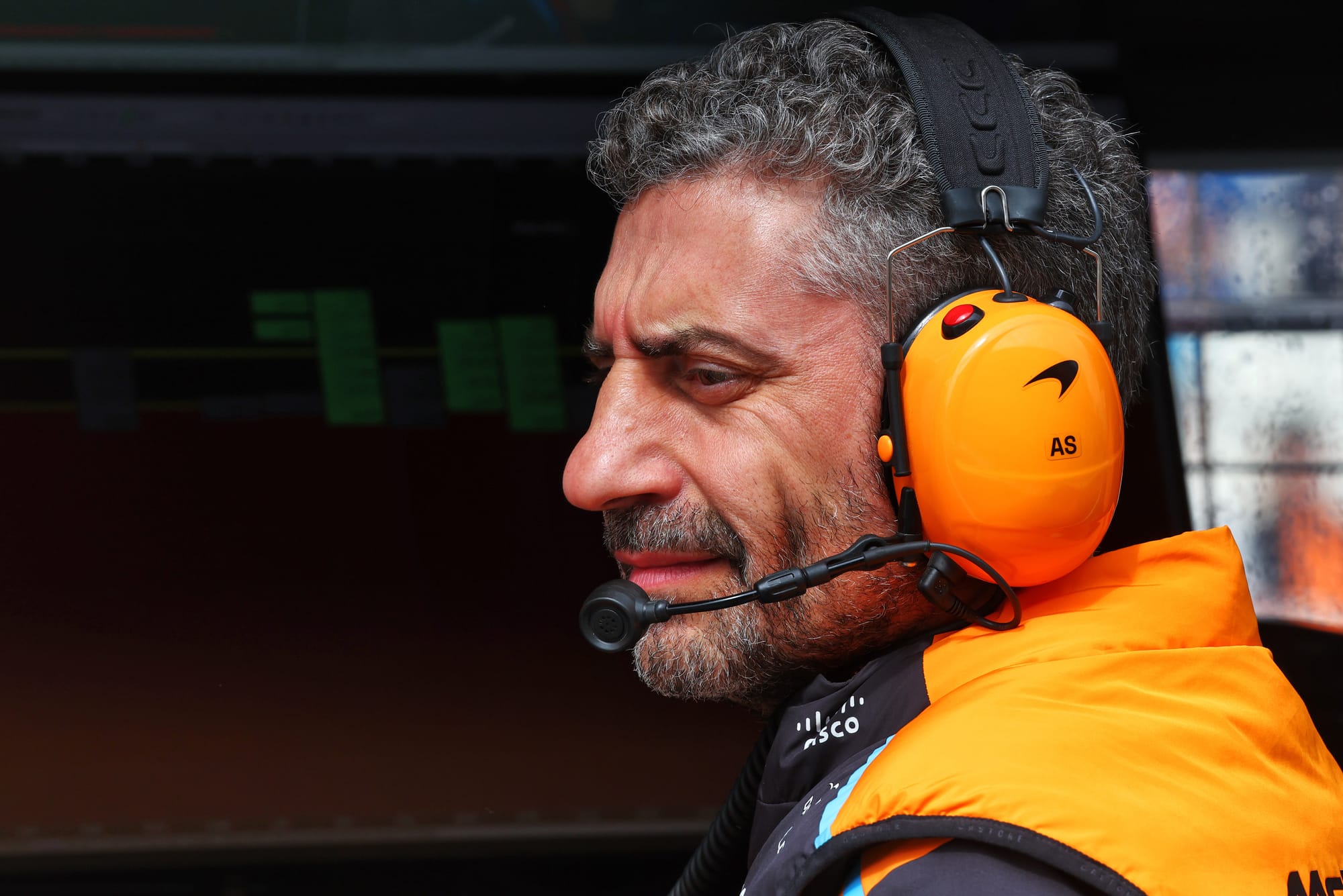
“We are happy that the FIA brings input onboard,” he said in late June about the process of policing flexible bodywork.
“If any team has a concern, it is good that they listen to the teams, they do the checks and if they are happy with what they see then we are happy with the FIA decision.
“With the FIA decisions around flexibility, to be honest we have no big reasons for concern.”
RULES VS REALITY
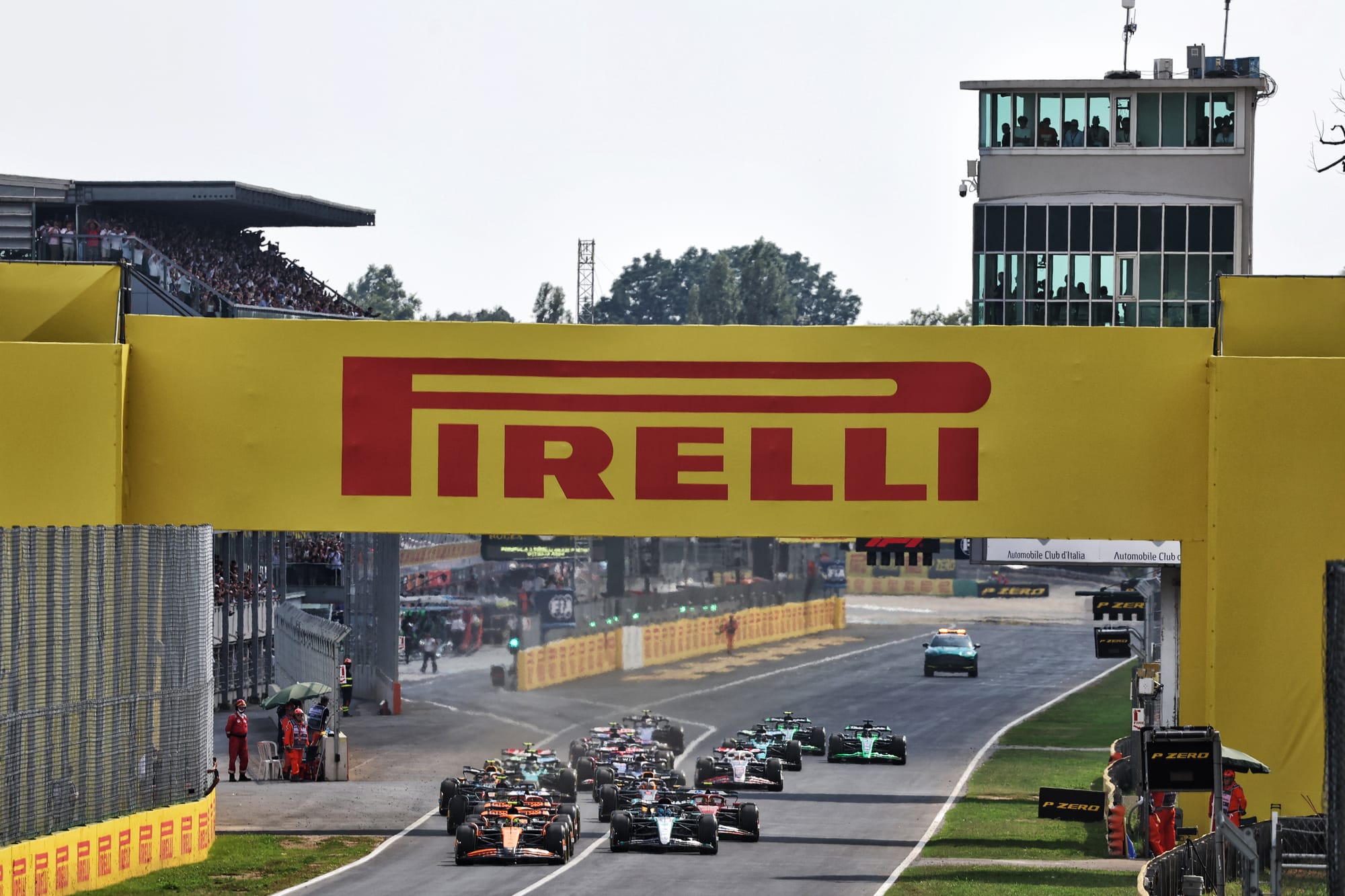
F1’s regulations on flexible bodywork are ostensibly straightforward. Other than specifically-defined exceptions, article 3.2.2 of the technical regulations states that “all aerodynamic components or bodywork influencing the car’s aerodynamic performance must be rigidly secured and immobile…furthermore this components must produce a uniform, solid, hard, continuous, impervious surface under all conditions”.
This regulation is augmented by various technical directives, such as last year’s TD018 that clamped down on variability in the flexibility of a part or any relative movement of interconnected parts. This was, according to then-FIA single-seater technical director Tim Goss, “about making sure that the FIA and the teams have a common understanding of where we will draw the line”.
There have been many such interventions over the years. That means there is a storied history in terms of what is and isn’t allowed, which makes a common understanding difficult to achieve.
That’s partly down to the opacity of the regulations and the FIA’s lack of transparency in making technical directives public. But it’s also down to the impossibility of the regulations.
The wording about rigidity is all well and good but it has to work in the real world and the fact is that, taken literally, entirely rigid bodywork parts are not possible. Particularly given the loads that the parts are under when at high speed on track, not to mention the extra spikes caused by the fact they are attached to a vehicle that’s hitting bumps and kerbs, there must be some compliance or parts would simply fail - potentially in extremely dangerous ways.
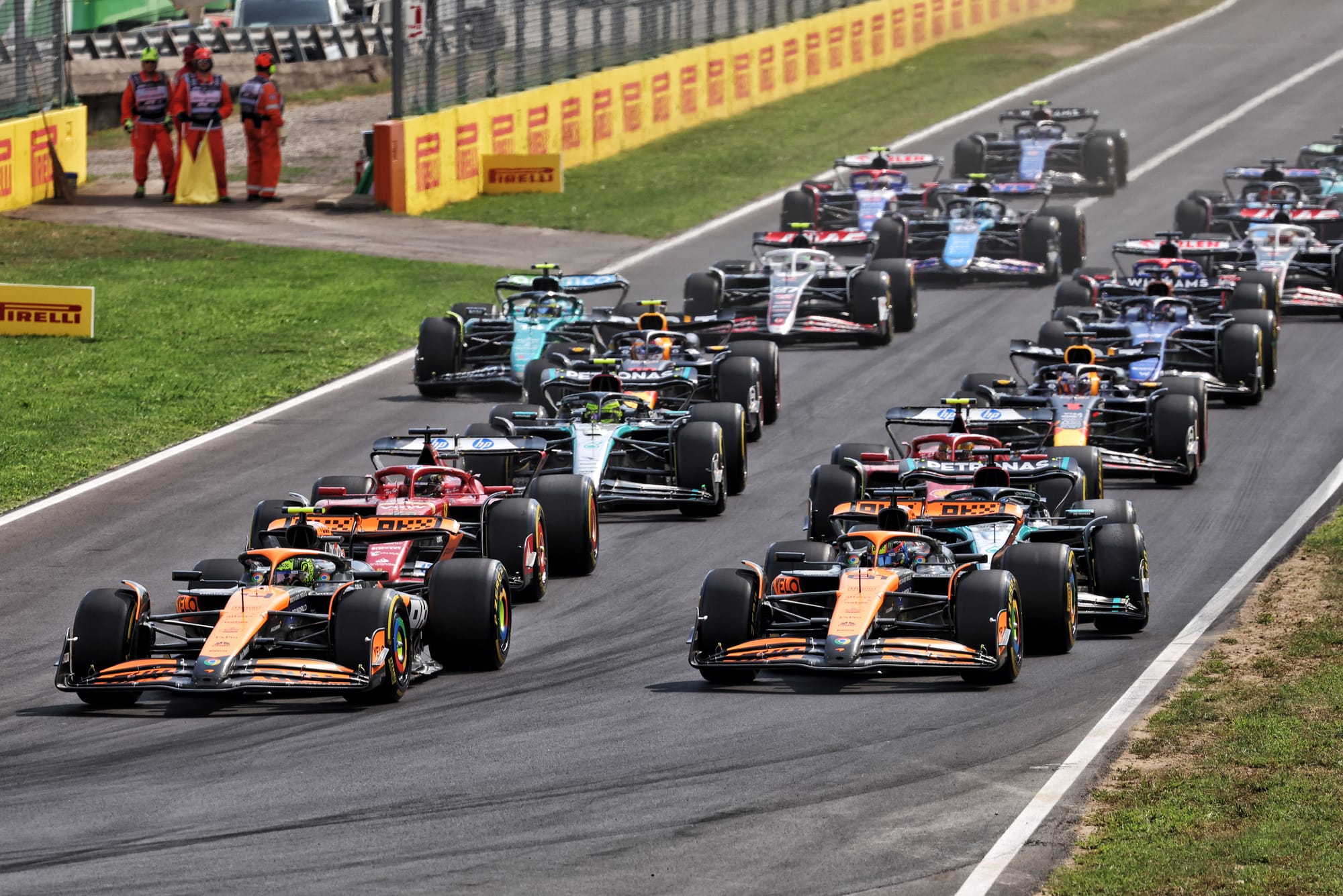
The prime objective of the regulations is to ensure safety and having literally rigid parts would be unsafe, so there’s an irresolvable tension in the rules.
That creates a certain amount of necessary subjectivity and that's why the de facto permitted flexibility is defined by the policing and the load tests cars are subjected to. Pass those and you are good to go.
This, of course, means part of the game is to create parts that pass the load tests then have aeroelastic characteristics that deliver performance.
The 'obvious' solution is to make the load tests more stringent but this requires custom-designed, purpose-built and portable pieces of equipment that can safely conduct these tests in situ on grand prix weekends.
That is neither cheap nor easy. In a climate where the FIA stresses the need to have the funding to make its policing even-more stringent and is pushing for more money in the next Concorde Agreement, there’s also a political angle to this in terms of the willingness to invest yet more significant sums in such kit.
RED BULL NEEDS ITS OWN SOLUTION
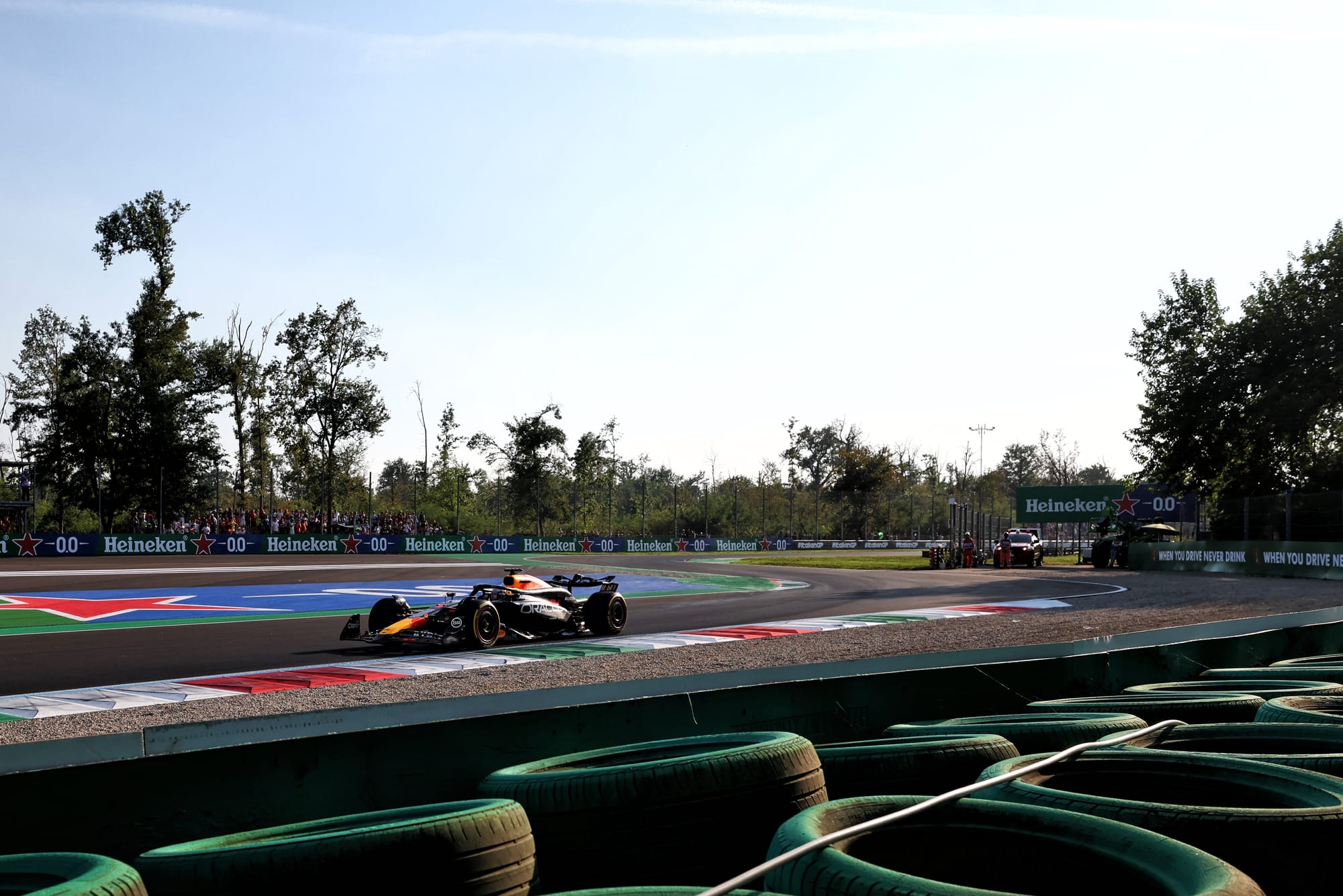
Red Bull’s position is more delicate than Ferrari’s given its dramatic slump over the course of 2024.
Beyond the pre-existing limitation with kerb riding that has existed since 2022, the persistent Red Bull problem of this season has been poor, ever-shifting balance making its car’s behaviour unpredictable.
Horner reckons the current balance issues were spotted last year but have been exacerbated by Red Bull’s continued development. In trying to unpick the wrong turn it has taken, Red Bull has conducted various in-weekend experiments by trying different floors, and is now at a stage of trying to work out which developments to prioritise in the short gap to the next race in Azerbaijan.
It will then likely use a bigger gap in the schedule across September and October to produce a more significant upgrade.
“There are certain fixes that potentially can be introduced,” said Horner.
“Perhaps not to resolve the whole issue but address some of it.”
But the front wing is an area of intrigue within this. It is clearly an area where Mercedes and McLaren appear to have stolen a march on Red Bull.
The problems sound similar to what Mercedes struggled with before a revised front wing this year helped give it a better connection between high speed and low speed performance.
At the time, technical director James Allison openly discussed how aeroelasticity played into that development.
“It’s clearly a thing that helps fight the inherent behaviour [of these cars],” he said.
“All of us are trying to ensure we pass the FIA’s flexibility tests. They put loads on and you’ve got to not move by more than an amount.
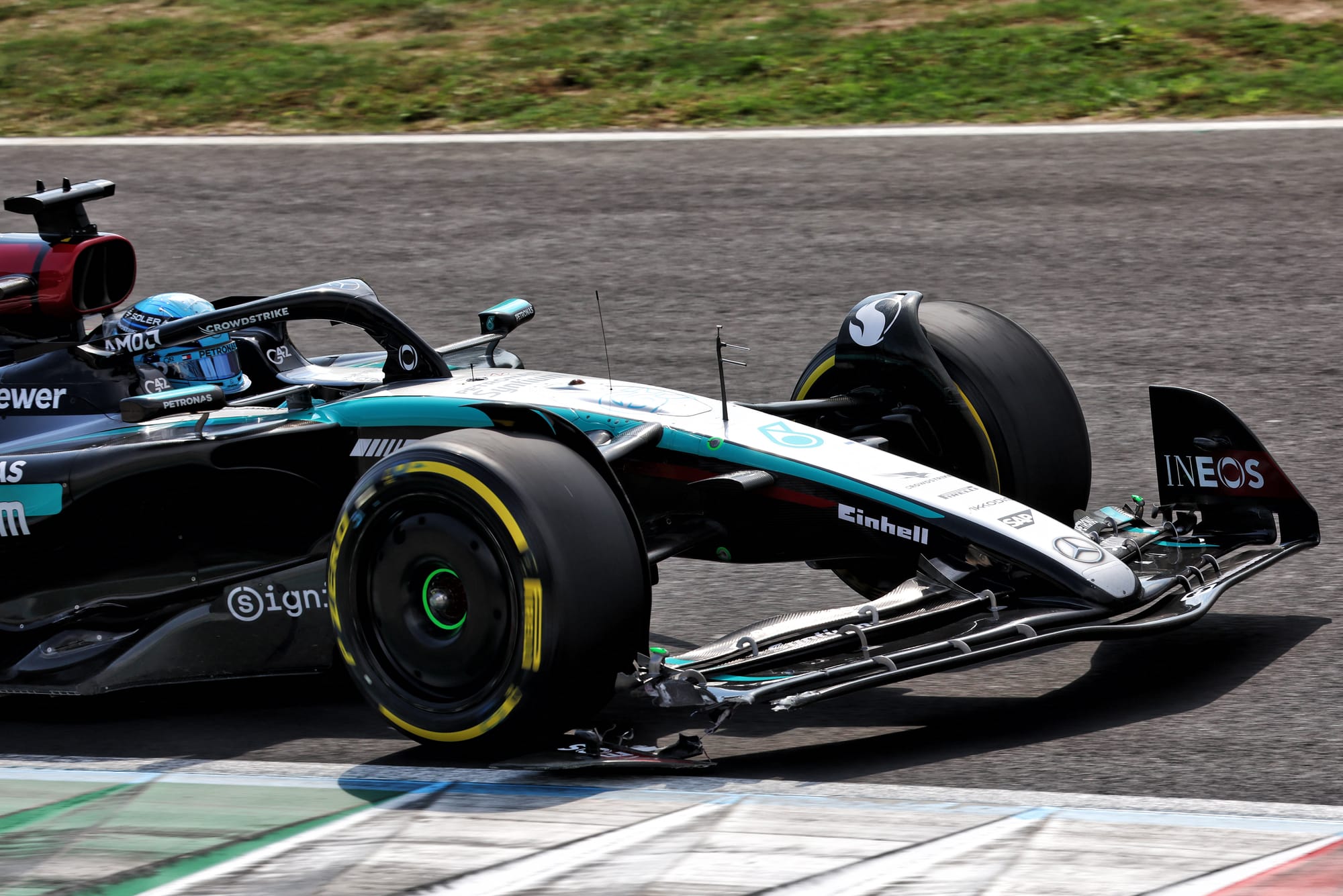
“Provided you can do that, and provided your wing just bends like a thing bends when you’ve got load on it, then there’s no drama to be faced with the governing body.
“I don’t think it would be legit to have a thing that does stuff at given speeds. Just something that bends the more load you put on it - all materials do that.
“That’s the playground most people are in.”
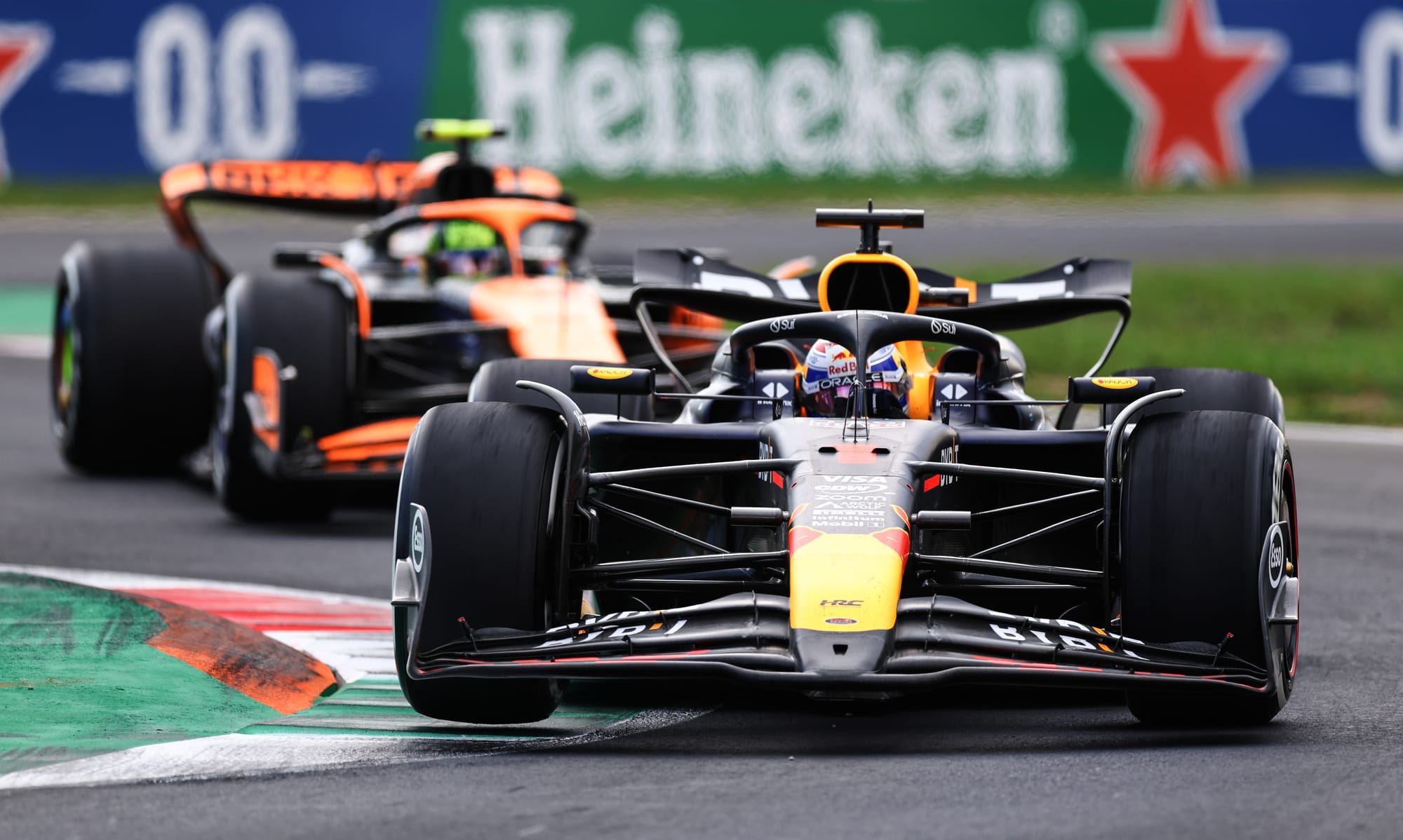
A change of its own in this area could help Red Bull achieve a more consistent balance across a wide range of corner speeds.
The question is whether it is capable of doing that or is just waiting for some kind of FIA clarification to be able to pursue it in the manner it intends.
“If it’s acceptable you have to join it,” Horner said when asked if Red Bull would need to go down that route.


